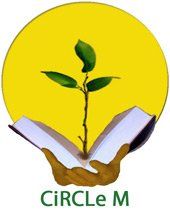Reconciliation … Toward a New Relationship – by Joyce Sasse
What does the Truth and Reconciliation Commission wish to accomplish? …
Bile rose in her throat when anyone mentioned the Truth and Reconciliation Commission. My heart ached for my friend, for she, too, was one of the victims of those terrible times.
Not that she saw herself as a victim, for she was a teacher in an Indian School that had both residential and day-school students. As a teacher, she saw herself giving these children opportunity to improve themselves.
“Reconciliation!” she ranted. “What’s there to be reconciled about? And what are they intending to write into any new curriculum about all the stuff that happened them! Leave well enough alone.”
I revisited the Truth and Reconciliation Commission’s website ( www.trc.ca/websites/reconciliation ) to see how Justice Murray Sinclair defined “reconciliation”. That’s when I recognized how both Aboriginal and non-Aboriginal people were victimized by the Canadian Government (and its representatives). “For seven generations” Sinclair says “Aboriginal children were told their lives were not as good as the non-Aboriginals of this country. Their languages and cultures and were irrelevant … their people and their ancestors were heathens and pagans … uncivilized … they needed to give up that way of life and come to a different way of living…” Furthermore, white children were taught the same thing.
Very few questioned that anything was wrong with that way of thinking.
Through story-telling, the photos and the research, the extent of wrong-doing by the Federal Government in its attempt to dispose of Canada’s First Nations becomes more apparent.
What is needed is reconciliation, a healing transformation, a revitalizing of relationship between the Aboriginals and the Canadian society. It will take time, but through education so we can get to know who these peoples really are, in our schools and in our communities, we can move beyond the ignorance, the fear and the racism to develop a deeper respect for each other.
Historical Notes from the Canadian Prairies :
Starvation and terrible suffering of the prairie Aboriginal and Métis People follow the destroying of the buffalo herds. To find more information about Lakota Chief Sitting Bull’s exile (as an example) see “Walsh: a play by Sharon Pollock” (published 1973) and “A Geography of Blood” by Candace Savage (published 2012).
In 1886 Fr. Lacombe took Blackfoot Chief Crowfoot and two other chiefs to Ottawa, via train, to meet with Government officials. On the final night of the visit Crowfoot was presented with a stack of rifles and ammunition by Government Officials. He astounded his hearers by rejecting them with a magnificent gesture as he said “I do not want these guns you would give me. I did not come here to make war – nor to defend myself, because I am with friends here. I have not even a small knife to defend myself … Keep the guns; we have many guns in our country!” When Fr. Lacombe translated the Chief’s words into French “his apparent hurt at the gift and the sincerity of his avowal of friendship struck to the hearts of the impressionable audience … they were seized with the strength of his personality .” Fr. Lacombe: the Black-Robe Voyageur by Katherine Hughes (published in 1911)
